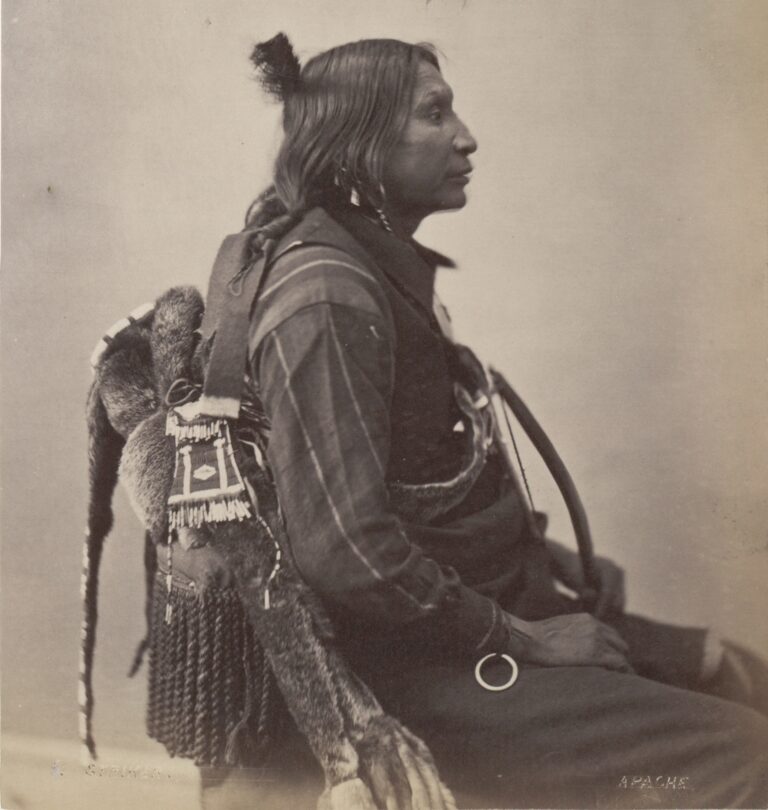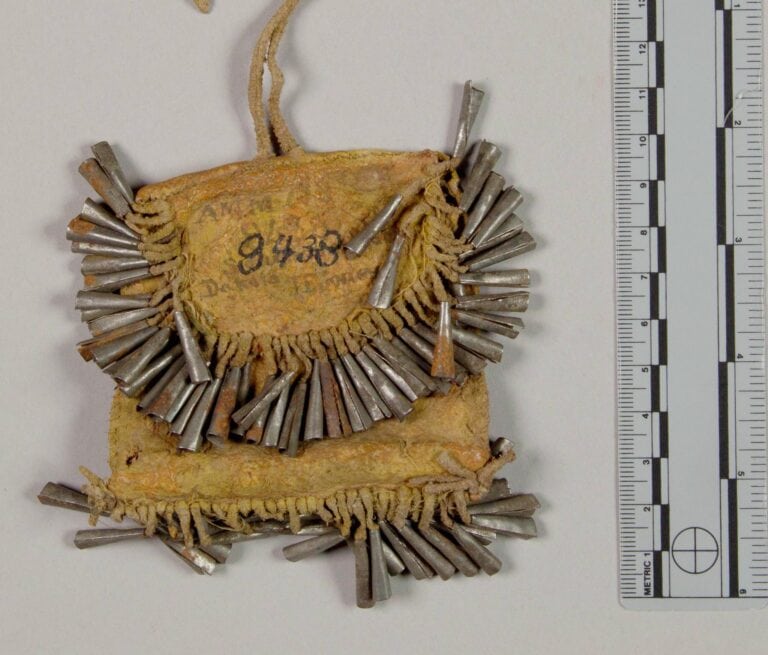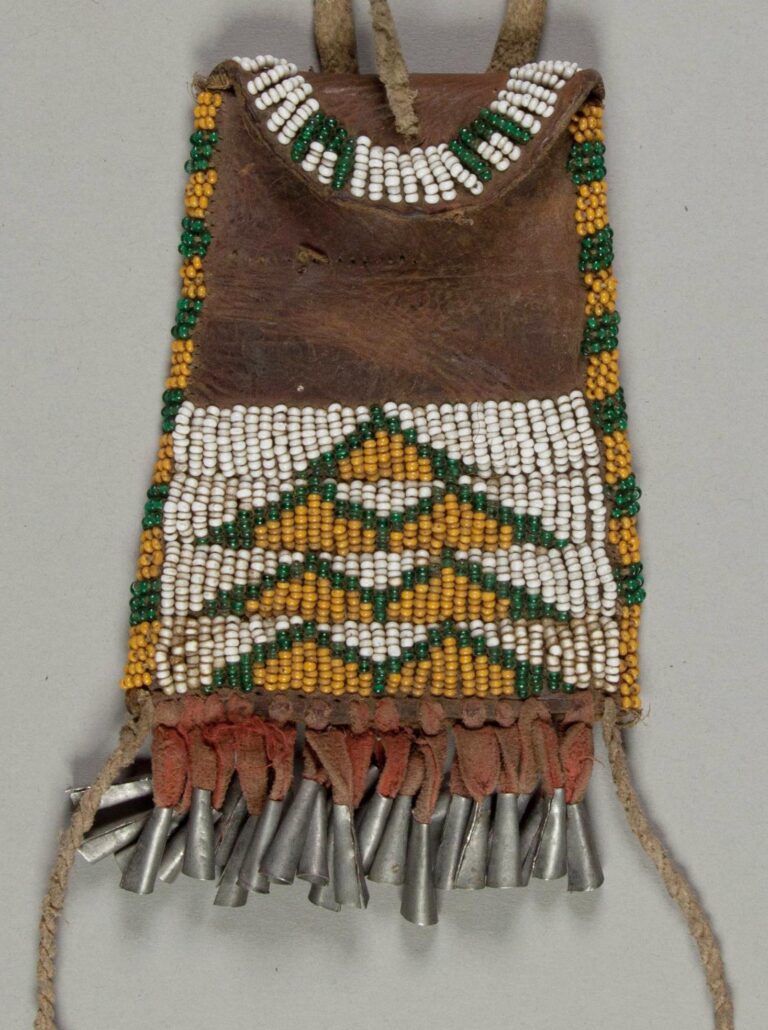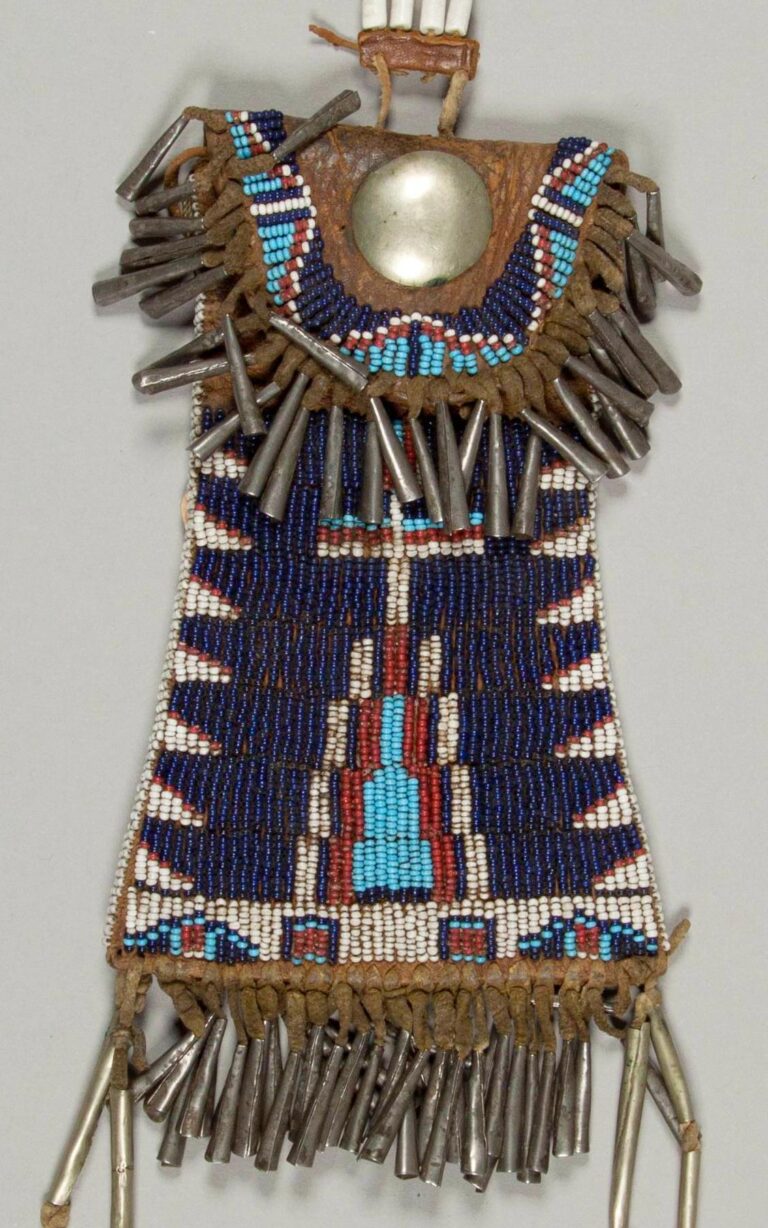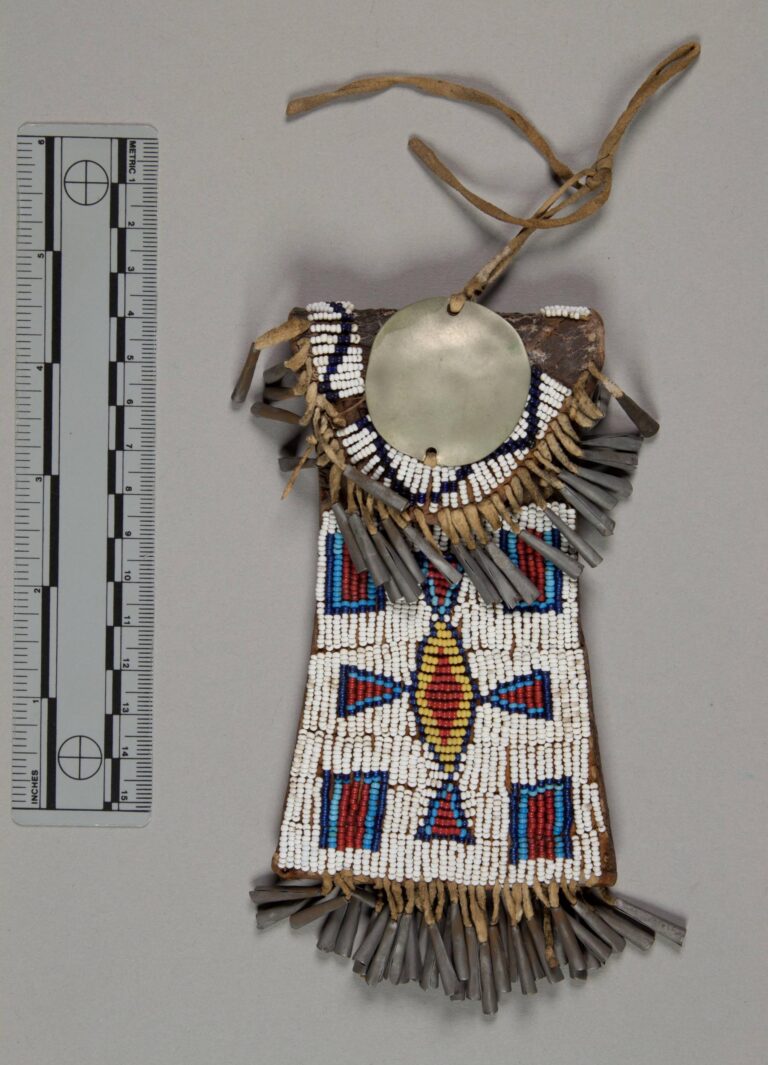Strike a light bags were quite common among the Plains Indians in the 19th century. They had both a practical and aesthetic function. The fire strikers were made of hardened carbon steel, which made them quite brittle. If a fire striker fell on a stone or was put under pressure, it could break. A stiff leather bag to keep them could therefore prevent such breakages.
Most of the strike a light bags were made of stiff commercial cowhide, only a small number were made of soft brain-tanned leather. Most of the strike a light bags were also beautifully decorated. One could even say they were works of art. The decoration consisted mostly of bead embroidery and decorative cones made from burnt cans.
Women often wore the bags on their belts to keep their fire starting kit close at hand. Alternatively, they may have been stored in a parfleche bag.
Southern plains men sometimes used strike-a-light bags too. They attached them to their quivers, specifically to the wooden sticks forming the bracing of the quivers, somewhere in the middle between the loosely hanging ends of the shoulder strap. This can be seen in both historic photographs and extant originals. The bags may have contained a striker, flint, matches, or even spare bowstrings.
Origin
Exactly where and when the bags were developed is uncertain, but it was probably somewhere on the southern plains, quite possibly among the Kiowas.
Very few pouches made before 1850 and featuring pony bead embroidery have survived. However, with the advent of seed beads these bags came into their own, marking the dawn of a new era.
Strike a light bags were made by the women of many different tribes from the central and southern plains. On the northern plains, this seems to have been less prevalent. Beautiful pieces were made by such tribes as the Lakota, Cheyenne, Arapaho and Ute. However, no bags are as beautiful and elaborate as those made by the Kiowas and, to some extent, the Comanche. The Kiowa strike a light bags are among the finest to be found on the plains. Their design is refined to point of near perfection.
It appears that these tribes produced the strike a light bags in larger quantities and distributed them northward to the tribes of the central plains through intertribal trade.
Description
Material
The strike a light bags were made from two types of materials, commercial cowhide or soft brain-tanned leather. Commercial cowhide is an industrially produced leather used for the making of boots, belts, bags and the like. In the 19th century, it was made by white men. Indians could get it directly from traders, or they could use old boots, horse harnesses, or satchels, for example, obtained through good means or foul, i.e. barter or theft.
Only a very small percentage of the bags were made from soft, brain-tanned leather. This is probably because commercial cowhide is much tougher and was therefore better able to protect the fragile striker from breakage.
Shape
The typical shape of a strike a light bag is trapezoidal, whereby the bottom edge is wider than the top one. The sides may have been straight, but were more often gracefully curved and rounded. The ones that were made by Kiowas typically have an elongated design with distinctly curved sides, while other tribe bags show rather straighter lines. The bags are rarely strictly rectangular, although some do exist. Some bags may feature a lower edge that is bent or C-shaped.
Flaps
Virtually all the bags feature a flap, usually rounded, which forms one piece with the back. Some flaps were secured by a leather thong, but most were not, with the flap simply folding over. Since the bags were quite tight, there was no danger of the fire striker falling out.
Beadwork
Almost all surviving pieces (with very few exceptions) are decorated with beadwork, usually on both sides, with the embroidery on the front usually larger than the embroidery on the back. Some bags are embroidered on the front only, but these are the exception to the rule. In general, an arc formed by a row of beads, embroidered using lane stitching, follows the edge of the flap. Some flaps may be embroidered over the entire area. In some cases, overlay stitching is also used.

Designs
The design varies according to the tribe. The very oldest surviving Kiowa pieces are embroidered with pony beads, most often in red, blue, black and corn colour, and bear the pattern of two mountains (triangles) or an hourglass (triangles facing each other); later bags, embroidered with seed beads, bear more complex geometric patterns and lines. The bags of other tribes are usually based on a design typical of their own or other tribes, and adapted according to the size and dimensions of the bag. The bags of the Ute, Lakota, Cheyenne and Arapahoes are therefore made up of successive rows of lane stitching. They often bear an hourglass design (two mountains or triangles facing each other, or in combination with squares).
The Edges
The side edges of many of the bags are also decorated with beads. Usually, the so-called whip stitch is used, whereby the thread forms a kind of spiral. The beads therefore artfully hide the unsightly edge.
Tin cones
A typical decorative feature of strike a light bags is a row of cones along the lower edge and round flap of the bag. The Indians made the cones by cutting a trapezoid shape out of tin plate, typically tobacco tins, which they then twisted into a cone. The cones were then burned in a fire to give them a dark colour. The cones were then attached to leather thongs and secured by making a knot on the thong.
Silver conchos
Some southern plains bags can feature additional decoration in the form of brass or, more commonly, silver conchos on the flap. This is in fact not real silver, but so-called “alpaca”, a mixture of zinc, nickel and copper. The Indians of the southern plains learned to work with these materials from the Mexicans.
“Tails”
Another type of decoration, referred to as “tails”, hung from the lower corners of the bags. These were usually made of plain leather thongs that could be decorated with additional beads, tin cones or even various tiny metal plates.
Leather thongs
As already mentioned, the bags were often attached to the women‘s belts, which were usually fitted with a strap at the back.







